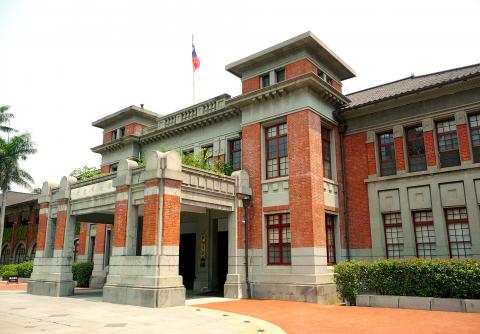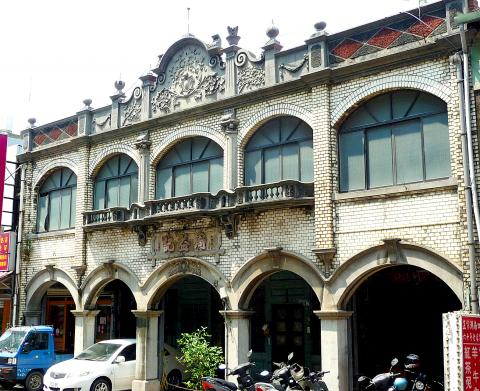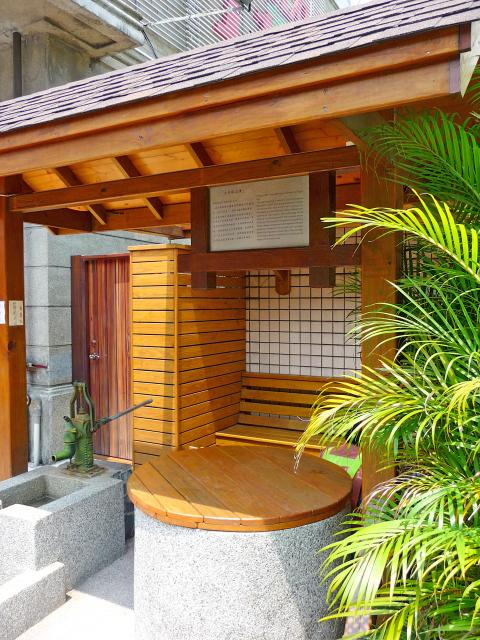It’s a city the majority of foreign tourists ignore, yet Hsinchu (新竹) is one of Taiwan’s oldest settlements. The written history of this municipality, which now has a population of 446,000, begins with the arrival of Fujianese pioneers in 1718.
Hoklo-speaking settlers called this place Tek-kham, a toponym which they wrote using Chinese characters that mean “bamboo barrier” (竹塹). However, there was no palisade. Tek-kham derives from a word in the language of the long-gone indigenous Taokas tribe that meant “seashore.”
The Fujianese were soon joined by Hakka settlers, and Hsinchu — the name that replaced Tek-kham when the town was promoted to a sub-prefectural capital in 1878 — has been a multiethnic settlement ever since. Being the southern terminus of Taiwan’s first railroad (one of just two railways built by the Qing Empire) surely boosted the local economy, but it wasn’t until the Japanese colonial period that the city really came into its own.

Photo: Steven Crook
Early on, the colonial authorities tore down the city wall, with the exception of Yingsi Old East Gate (迎曦東門城). While the gate isn’t a symbol of the Japanese era, its position for the past 117 years in the middle of a traffic circle certainly is.
The traffic circle was one aspect of the colonists’ plan to modernize the city and facilitate commerce. Widening several roadways in central Hsinchu was another. Previously, the thoroughfares leading to the city gates had widths of 3.84m wherever possible, so as to conform to an ancient Chinese notion that certain distances and measurements are auspicious. In this instance, imperial officials had decided that the ideal dimension would be one and two tenths zhang (丈).
A short section of what used to be the moat still exists south of the traffic circle, and there’s a longer section to the north. The city government has done a good job beautifying this urban creek, which for decades served as a sewer.

Photo: Steven Crook
From the moat, it’s a short stroll to four Japanese-era public buildings, the most obscure of which is Hsinchu Contemporary Art Gallery (新竹市美術館) on the corner of Jhongyang Road (中央路) and Fuhou Street (府後街). This elegant two-story edifice was recently sandblasted, and the wooden window frames replaced. At the same time, the entrance and internal facilities were made barrier-free. The exhibition space inside is open Tuesday to Sunday, 9am to 5pm.
For much of the postwar period, the building served as a household registration office. According to an information panel inside, it’s an example of “red brick eclecticism.” The small but elaborate porte-cochere at the front features Romanesque arches, but the roof tiles are Japanese in style.
Fuhou Street means “street behind the government building,” and it’s an accurate description of its location. To appreciate the grandeur of the office in question — originally known as Hsinchu Prefectural Hall (新竹州廳) and completed in 1929 — you should walk to Jhongjheng Road (中正路).

Photo: Steven Crook
The complex’s official name is now Hsinchu City Hall (新竹市政府). The mayor’s office is here, so tourists aren’t especially welcome. The exterior, which combines brick with concrete, deserves a few minutes of your time, after which you should cross the busy thoroughfare to Hsinchu City Fire Museum (新竹市消防博物館) at 4 Jhongshan Road (中山路).
There’s been a fire station here since the current building was completed in 1937. Its sides are covered with tiles of a hue that’s somewhere between brown, green, and gray. Some locals think the design was inspired by church architecture, yet the tower ends not in a spire but an observation deck (not open to the public) seven stories above street level.
Before you set foot inside, you’ll notice a recently renovated well on the right. Back when much of the city lacked hydrants, this is where fire trucks filled their tanks before responding to emergencies. The museum, which is open from 9am to 5pm Tuesday to Sunday, doesn’t contain much of interest. The most memorable exhibit is a photo of a wind turbine somewhere in Taiwan being consumed by flames.

Photo: Steven Crook
The Image Museum of Hsinchu City (新竹市影像博物館), built as a movie theater in 1933, is a mere 250m south of the Fire Museum at 65 Jhongjheng Road. Renovations will continue until the end of this month at least, but the distinctive Islamic geometric patterns which decorate the side facing the road are still visible.
Walking due west from here will bring you to Beimen Street (北門街) and the eternally busy City God Temple (新竹都城隍廟). A decade ago, Beimen Street was considerably more charming and characterful than it is now. It was lined by businesses which catered to the conservative tastes of middle-aged local folks, such as tailors and herbalists. Many of these businesses have closed down, and in several cases the pre-World War II shop-houses which they occupied have disappeared altogether, replaced by parking lots or apartment blocks.
Some lovely architecture remains, however. But for a single missing roof embellishment, the baroque-style Zhou Yi Ji Old Residence (周益記古宅) at number 59 looks to be in good shape. It’s about three times’ larger than most properties on the street. Five arches face the street, and the building’s name appears above the central arch.
According to a timeline on the Web site bshu1926.com, the building was completed in 1926, and the facade and much of the interior were remodeled in 1945 following an earthquake. No one has lived here permanently since 1994, but the theft of heirlooms prompted members of the Zhou clan to take action.
In 2011, Zhou You-da (周友達) — described by the Web site as “a member of the family’s sixth generation to live in Taiwan” — was able to consolidate property rights relating to the building. This achievement is not to be underestimated: Taiwan’s inheritance laws and customs, coupled with a reluctance on the part of many older people to draw up a will, often results in fragmented ownership of real estate. Many well-intentioned people have found old houses they hope to buy and refurbish — but give up when confronted with the reality of dealing with dozens of owners whose opinions can’t be reconciled.
Some progress has been made since then. In 2013, the building was listed as a municipal-level relic, The Web site reports an inventory has been made of the building’s furniture and furnishings, and that restoration is planned. Passing by a month ago, I couldn’t see any signs that repair work had begun. But the next time I’m in this city I adore, I’ll be sure to take another look.
Steven Crook has been writing about travel, culture, and business in Taiwan since 1996. He is the co-author of A Culinary History of Taipei: Beyond Pork and Ponlai, and author of Taiwan: The Bradt Travel Guide, the third edition of which has just been published.

This month the government ordered a one-year block of Xiaohongshu (小紅書) or Rednote, a Chinese social media platform with more than 3 million users in Taiwan. The government pointed to widespread fraud activity on the platform, along with cybersecurity failures. Officials said that they had reached out to the company and asked it to change. However, they received no response. The pro-China parties, the Chinese Nationalist Party (KMT) and Taiwan People’s Party (TPP), immediately swung into action, denouncing the ban as an attack on free speech. This “free speech” claim was then echoed by the People’s Republic of China (PRC),

Exceptions to the rule are sometimes revealing. For a brief few years, there was an emerging ideological split between the Democratic Progressive Party (DPP) and Chinese Nationalist Party (KMT) that appeared to be pushing the DPP in a direction that would be considered more liberal, and the KMT more conservative. In the previous column, “The KMT-DPP’s bureaucrat-led developmental state” (Dec. 11, page 12), we examined how Taiwan’s democratic system developed, and how both the two main parties largely accepted a similar consensus on how Taiwan should be run domestically and did not split along the left-right lines more familiar in

Specialty sandwiches loaded with the contents of an entire charcuterie board, overflowing with sauces, creams and all manner of creative add-ons, is perhaps one of the biggest global food trends of this year. From London to New York, lines form down the block for mortadella, burrata, pistachio and more stuffed between slices of fresh sourdough, rye or focaccia. To try the trend in Taipei, Munchies Mafia is for sure the spot — could this be the best sandwich in town? Carlos from Spain and Sergio from Mexico opened this spot just seven months ago. The two met working in the

Many people in Taiwan first learned about universal basic income (UBI) — the idea that the government should provide regular, no-strings-attached payments to each citizen — in 2019. While seeking the Democratic nomination for the 2020 US presidential election, Andrew Yang, a politician of Taiwanese descent, said that, if elected, he’d institute a UBI of US$1,000 per month to “get the economic boot off of people’s throats, allowing them to lift their heads up, breathe, and get excited for the future.” His campaign petered out, but the concept of UBI hasn’t gone away. Throughout the industrialized world, there are fears that